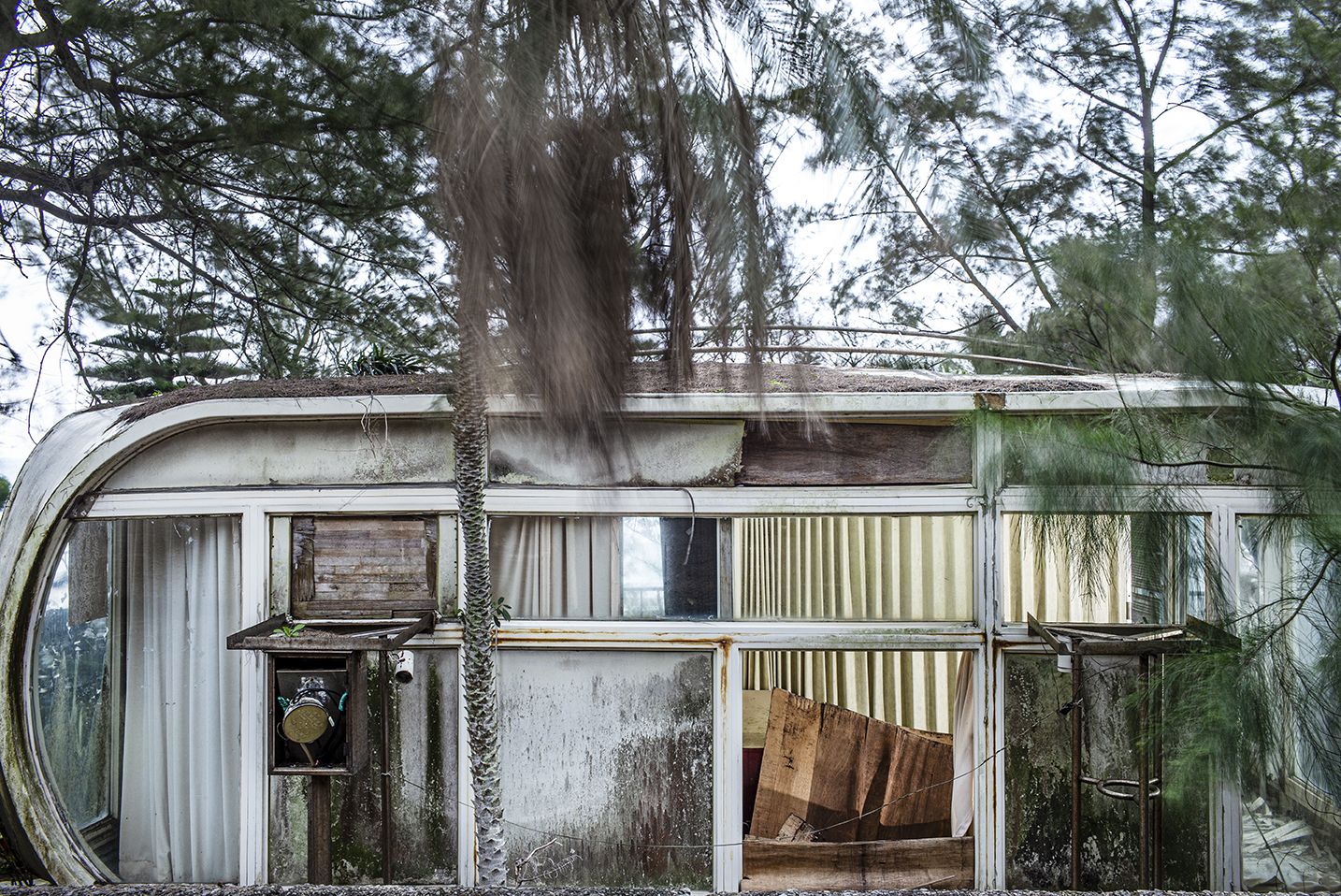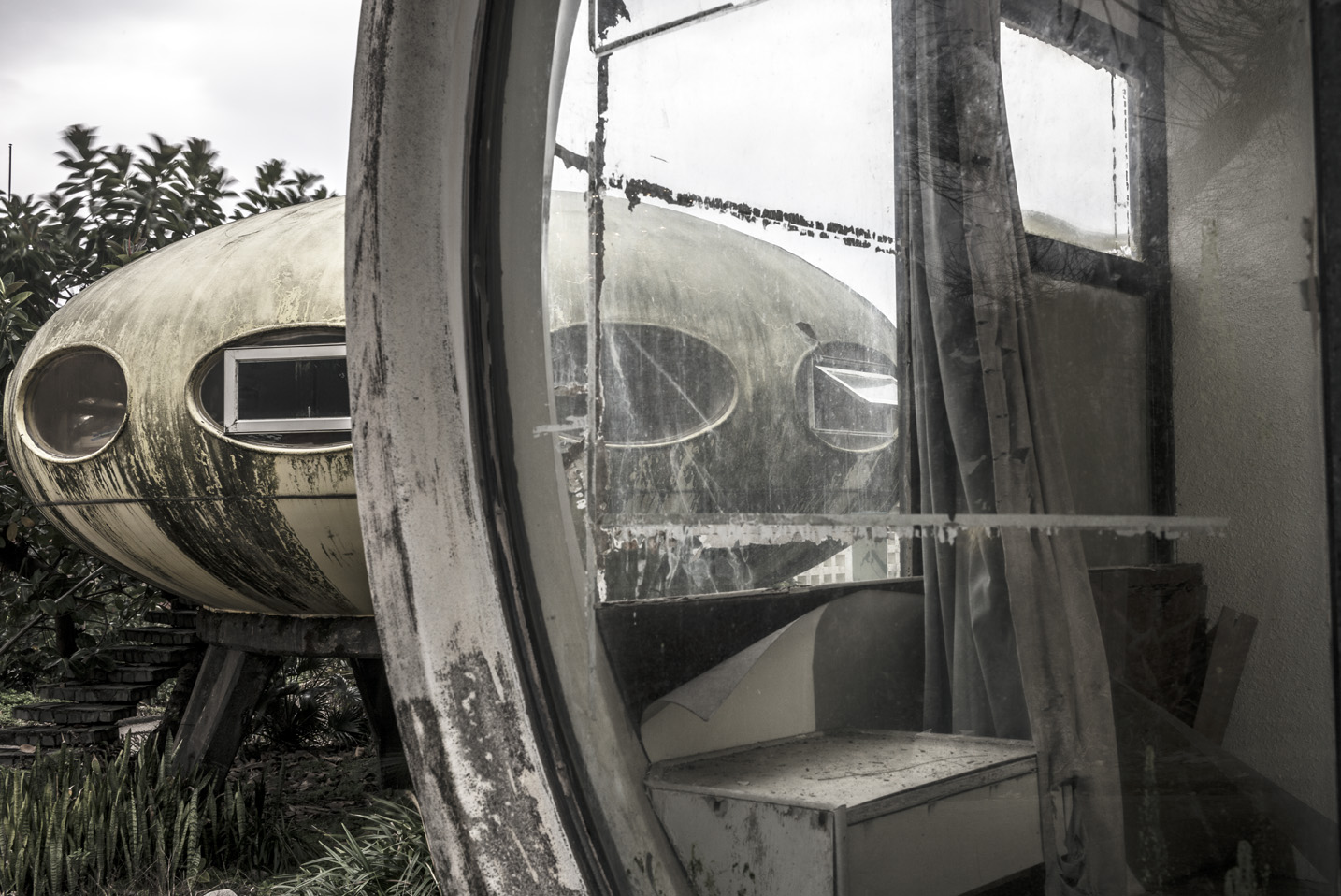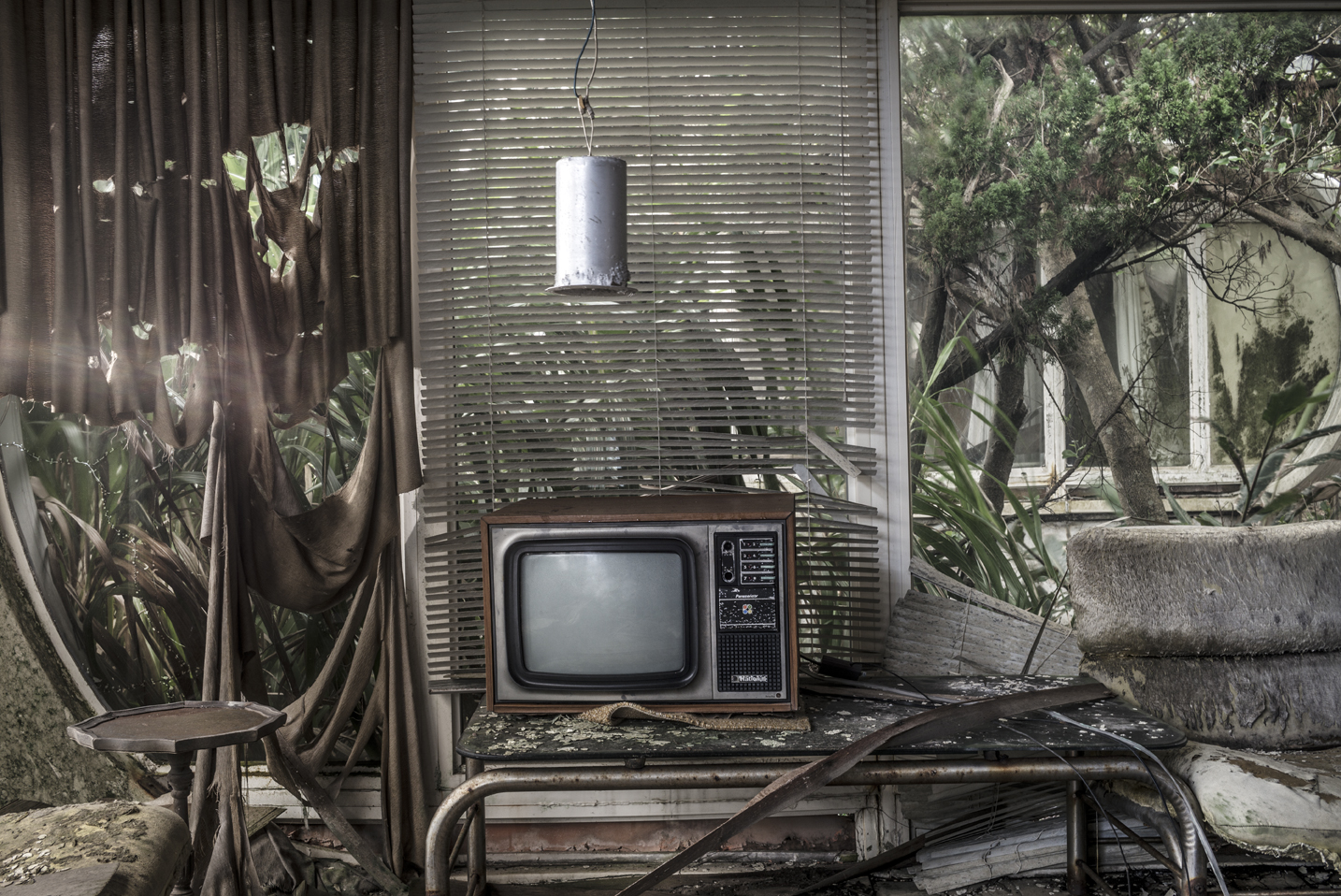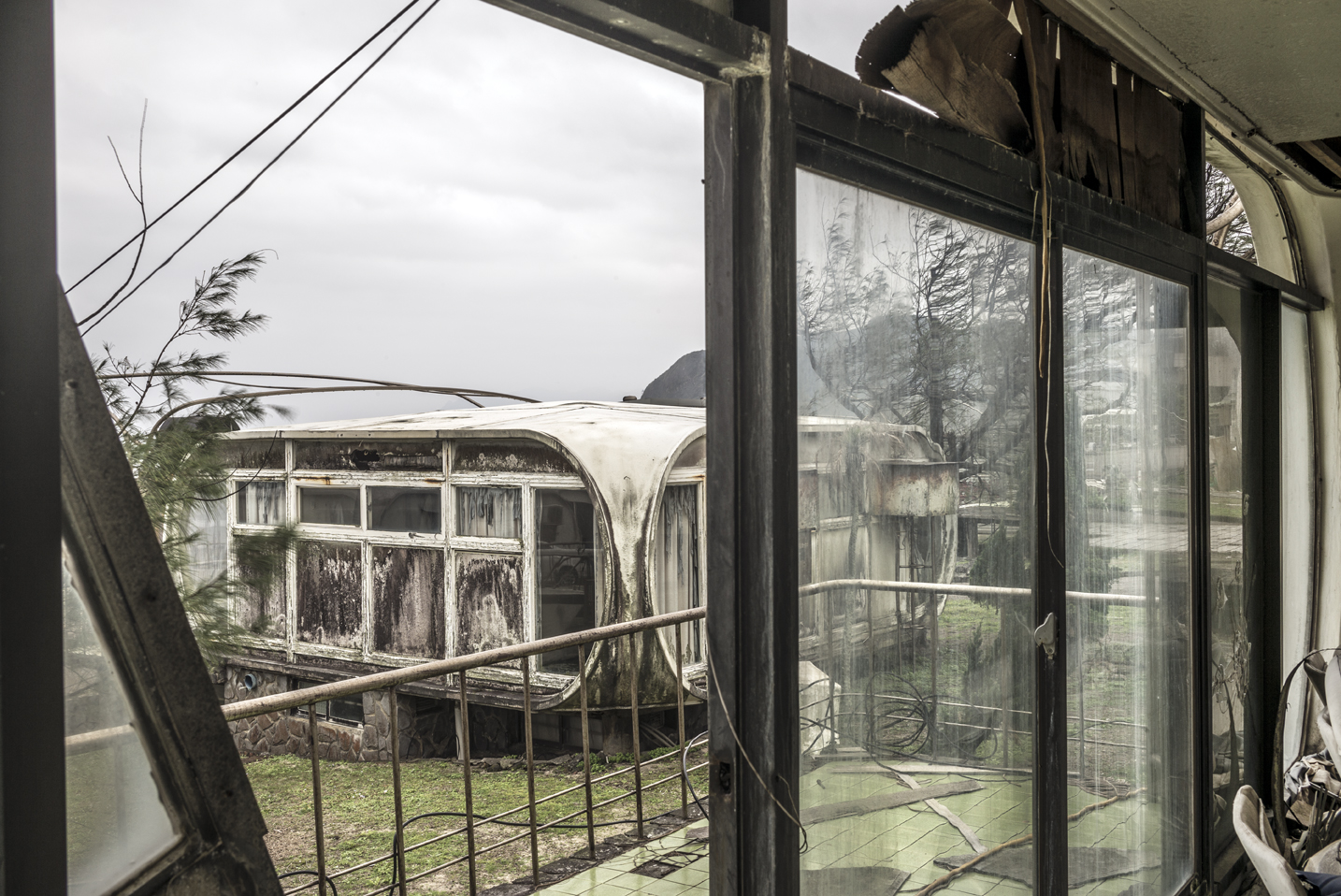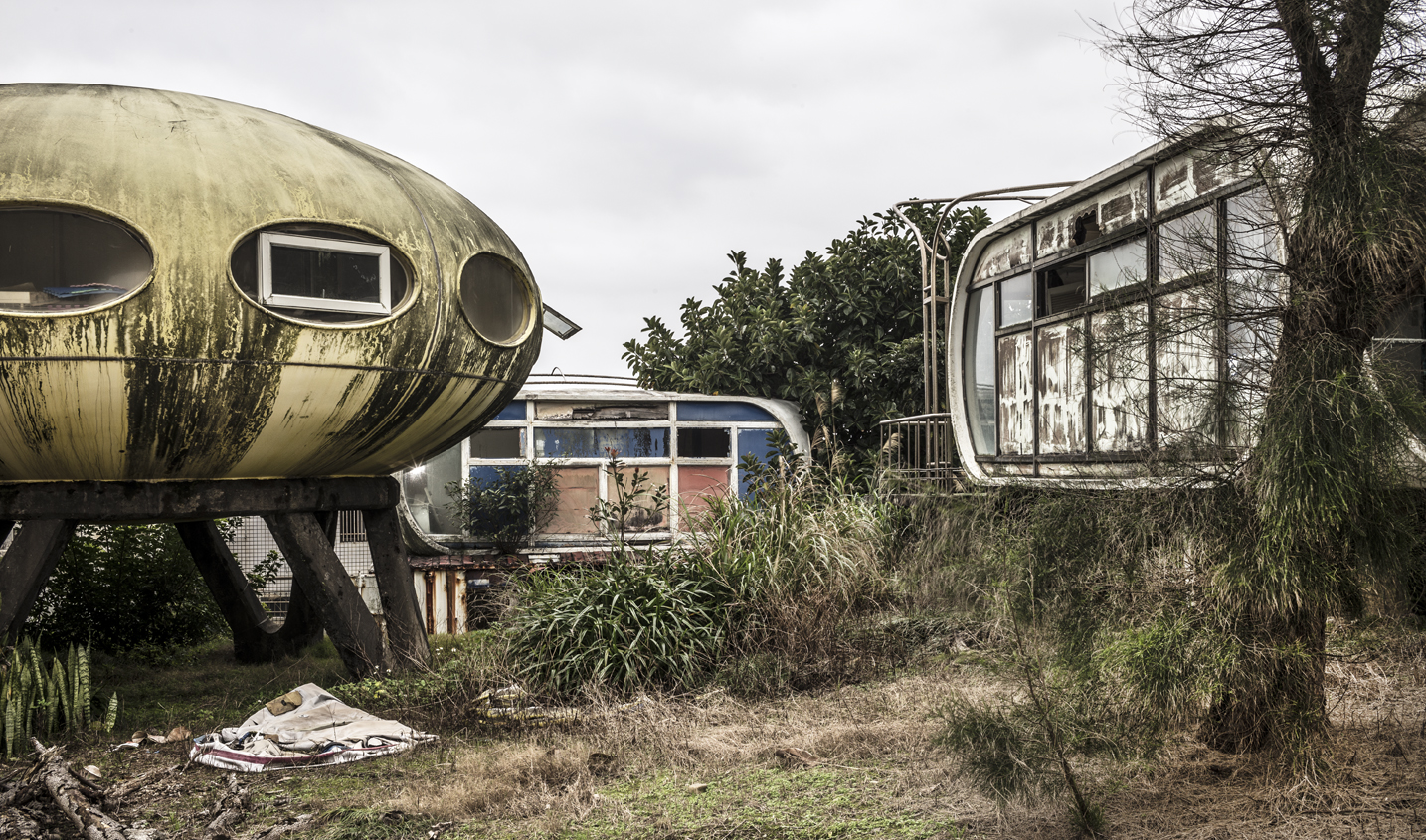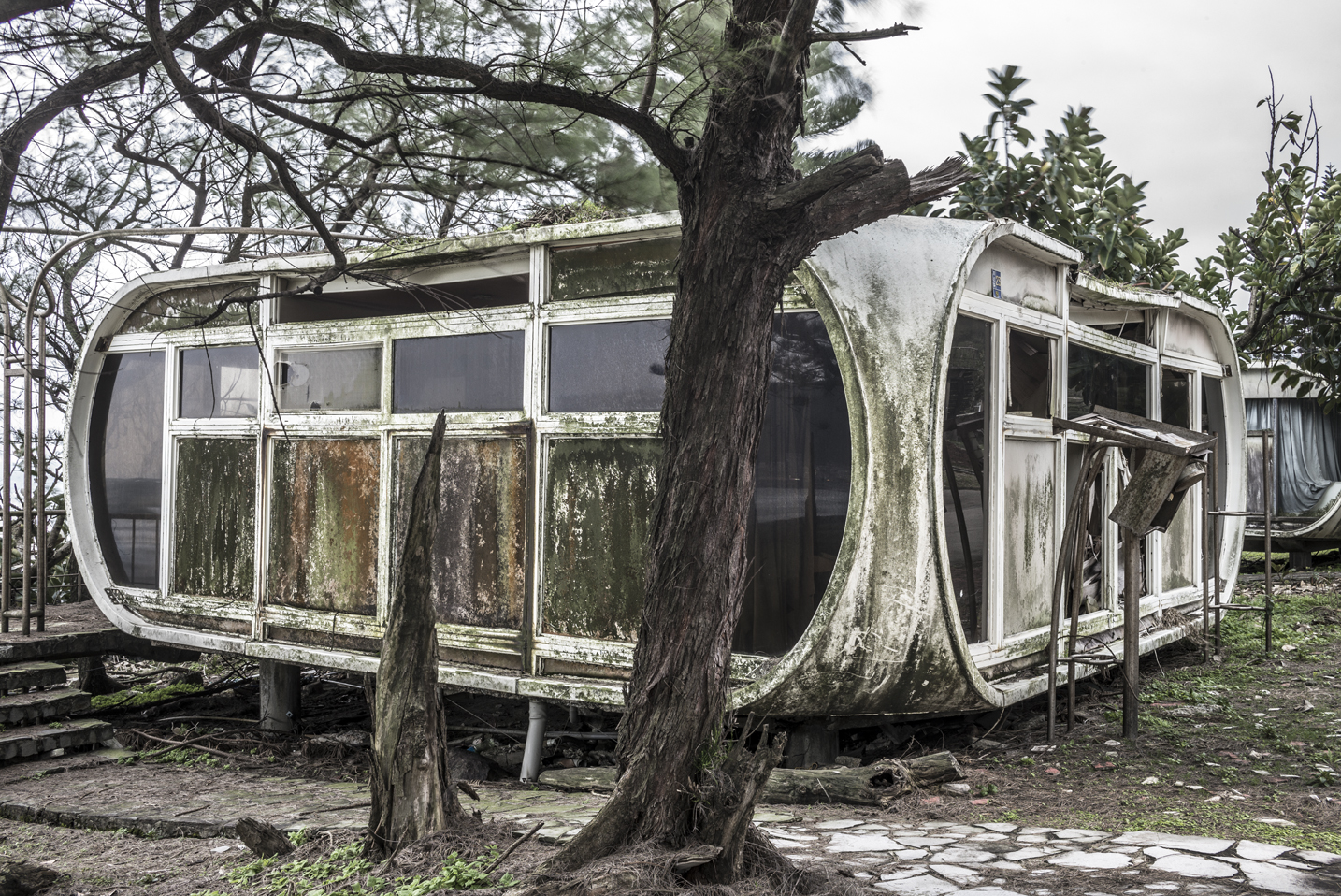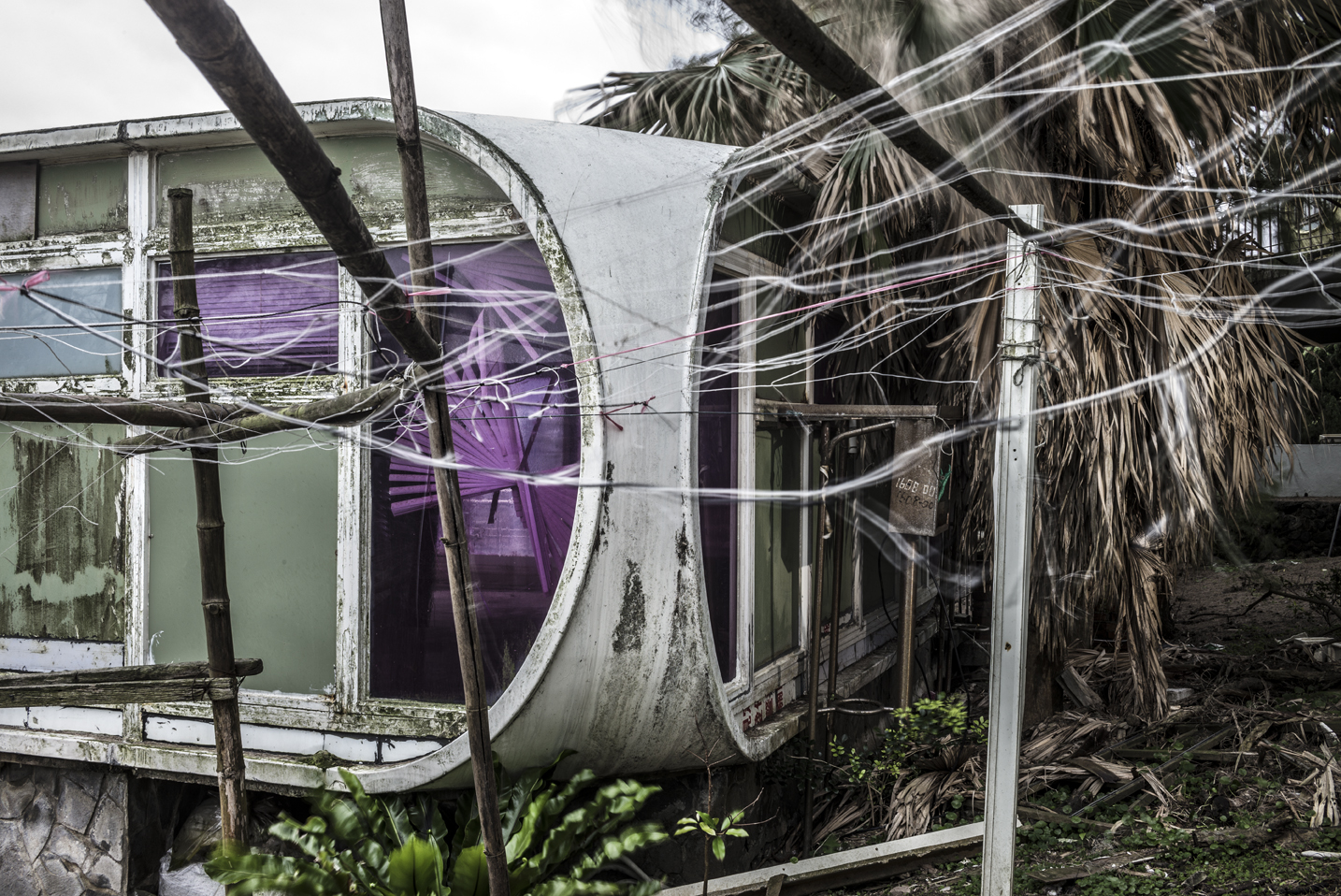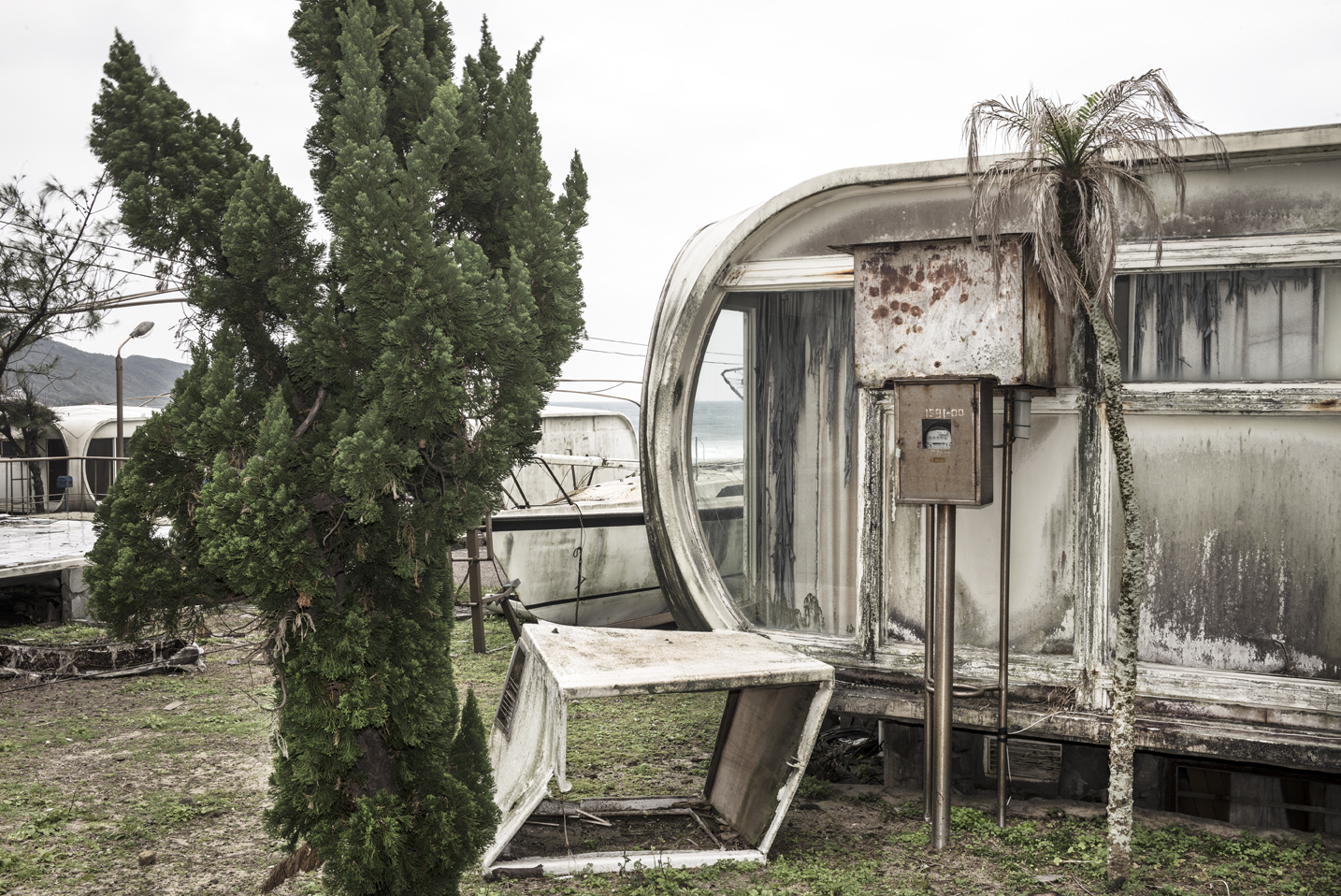
The exhibition UFO LIVING picks up on the current trend towards Tiny Houses, the return to nature and the design of the 70s. On display are 16 works from the series “UFO VILLAGE” from 2020, color photographs taken in Taiwan during the artist’s exhibition residency there. Built according to the plans of the Finnish architect Matti Suuronen, the beachfront settlement of vacation homes of the so-called “space architecture” consists of about 13 houses, which even today seem futuristic.
At the end of the sixties, Matti Suuronen was commissioned to design a mobile ski lodge. It was the time of technological progress. Visions of the future with new materials emerged, visionary designs – shaped by confidence in science and technology – conquered the market. New energy sources and the dream of traveling to other planets ignited a fireworks display of utopian solutions.
This is how the world’s first houses made of plastic and mass-produced came into being from the pen of Matti Suuronen. The FUTURO house, resembling a “flying saucer”, conquered the hearts of interested parties in no time. No other object embodies the design of that era of awakening better than Suuronen’s design.
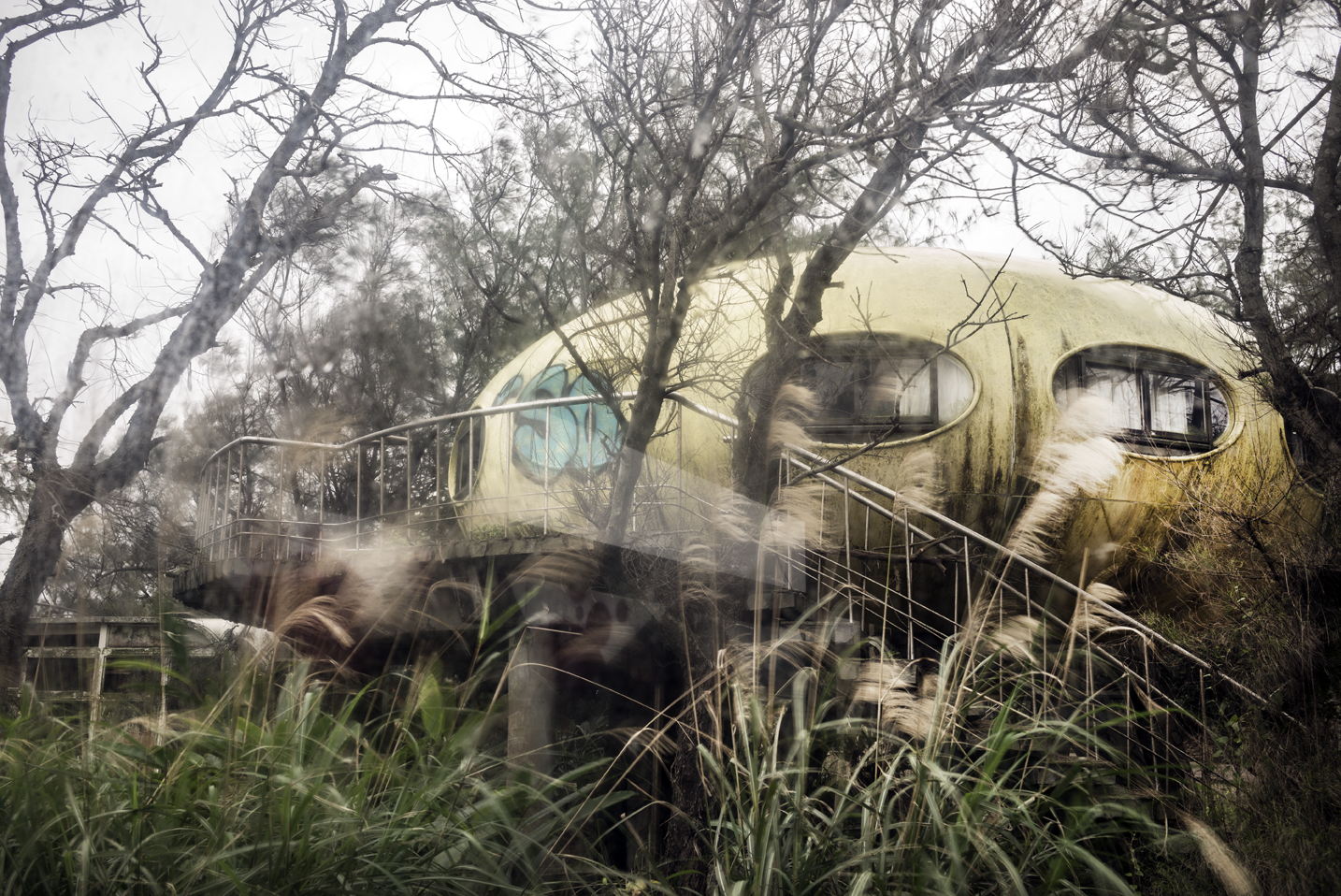
The house, which is made in segmental construction and measures around 25 – 36 square meters, is made of polyester reinforced with fiberglass. The diameter of eight meters and the height of four meters made it possible to create a small apartment with a bedroom, living room, kitchen and bathroom. The front door with integrated staircase – folding outwards – resembles that of small jets.
Weighing around four tons, including furnishings, the house could be placed on the metal frame by a transport helicopter even in imponderable terrain.
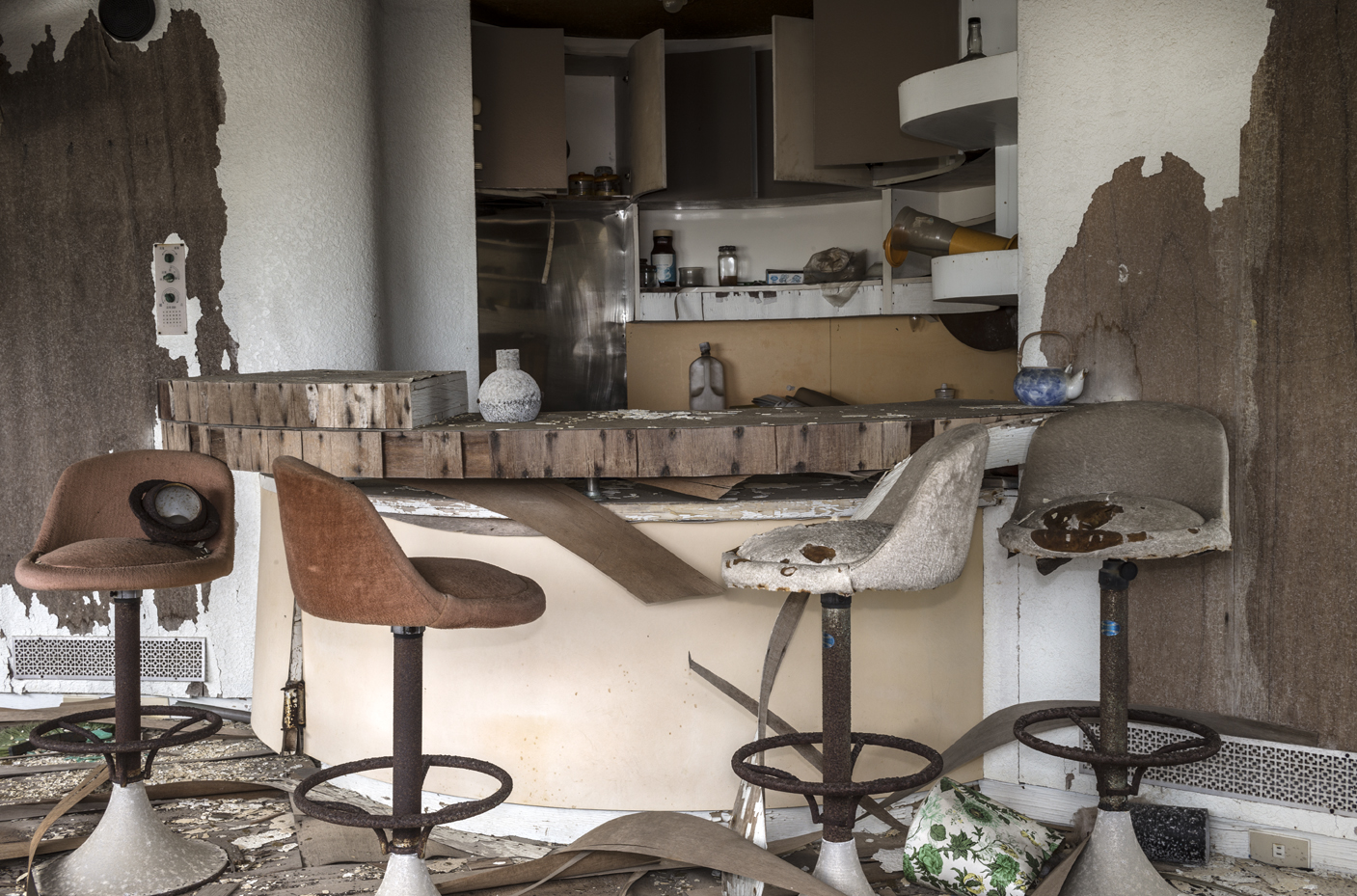
There was also another design: the VENTUROS. Also futuristic in appearance, these houses appear equally spectacular in design. They, too, accommodated the quest for a newly discovered mobility.
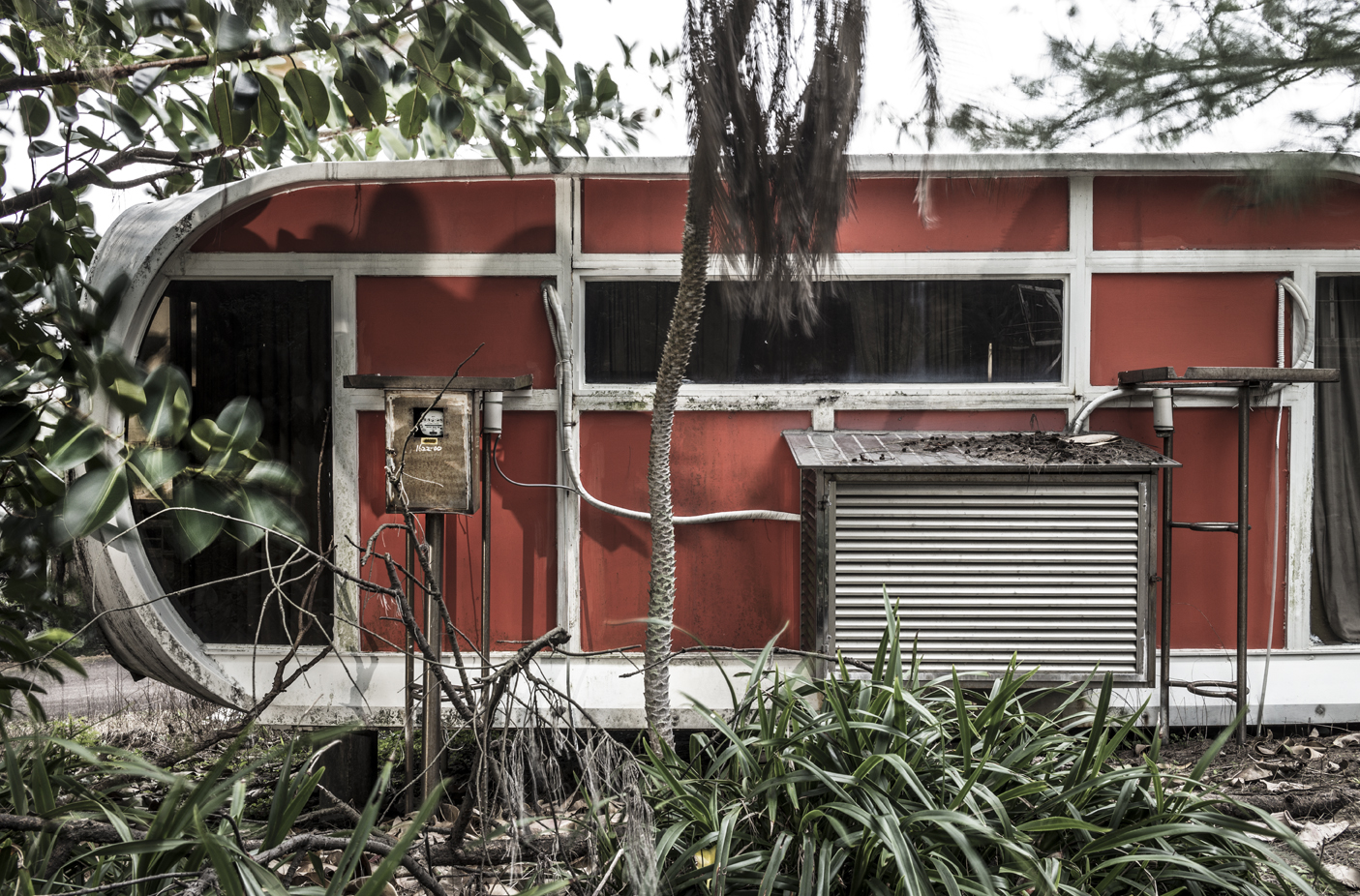
Following the space-age idea, artists, designers and creative people became increasingly interested in these extraordinary dwellings. The action artist Charles Wilp placed a FUTURO on the roof of his Düsseldorf house. Andy Warhol and Joseph Beuys visited Wilp in his “spaceship”. Christo also took up the object and wrapped a FUTURO in 1970 as part of an art happening.
Between 1968 and 1973, Polykem Ltd. delivered around 60 or even up to 100 FUTUROS worldwide. But plastic-based production proved unprofitable in the wake of the global oil crisis in 1973.
Less well known is the background of a probably unique accumulation of FUTUROS and VENTUROS in Taiwan. The partly dilapidated houses of this vacation settlement seem abandoned like a flight of foxes. Thus some theories and mystical stories entwine around the area called “Ufo Village”. Since the FUTUROS are not set up on a metal framework and are also arranged higher and have a brick staircase, one assumes either a license use or copies.
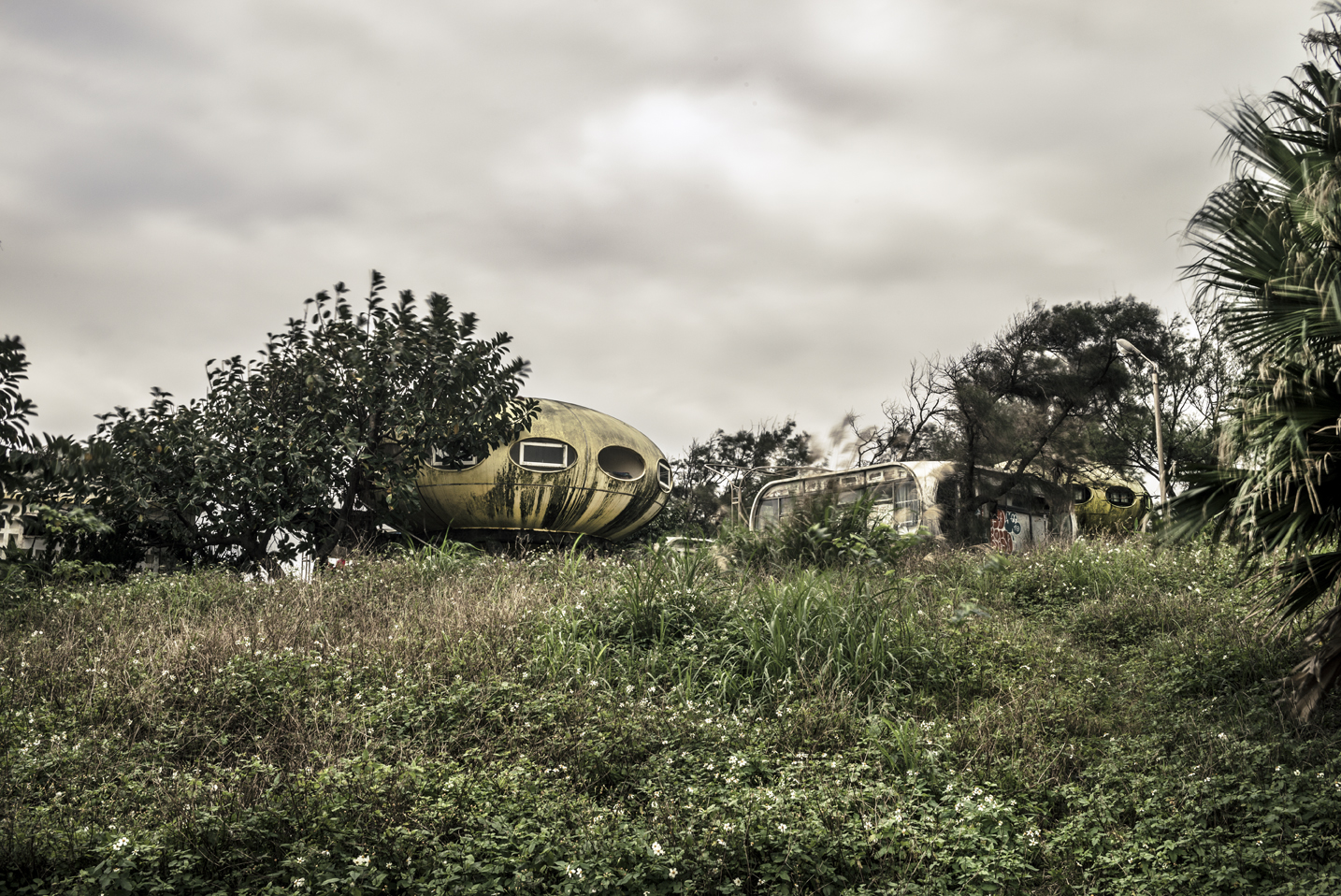
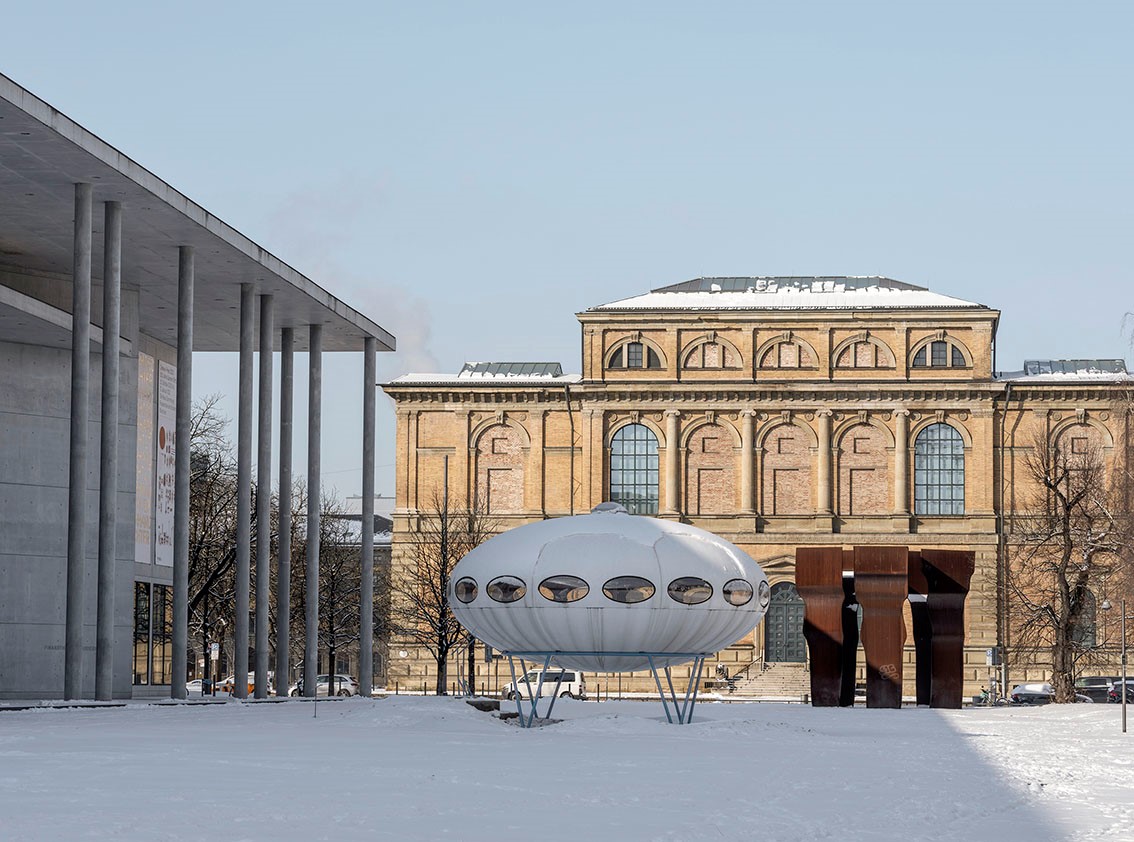
A FUTURO has landed in Munich.
One of the 70 original FUTUROS built has been on display at the Pinakothek Museum in Munich since 2017.
The design icon, which was once actually only intended as a ski hut, was owned by Stiebel Eltron in the early seventies and stood on the company’s premises in Vlotho. In 2012, the Charles Wilp Museum in Witten bought it. The Munich design museum Die Neue Sammlung bought the Futuro House from its colleagues in Witten and is now presenting it publicly in the open space in front of the Pinakothek after a lengthy restoration process.
MICHAEL NISCHKE (*1956 in Berlin-Schmargendorf) came to photography during his school years in Oslo (Norway). He later completed his photography studies in Cologne and assisted Prof. Heinrich Riebesehl from 1983 to 1986. In addition to his practical photographic work for well-known publishers, he authored a number of renowned and award-winning reference books and, as a member of the editorial board of Photo International – the professional magazine for the international photography scene – was responsible for the technology section. He is considered one of the protagonists of panorama photography in Germany and founded the first photo gallery specifically for this format in Munich in 1990.
He is also an appointed member of the German Society for Photography (DGPh)
and has published more than 50 books and art calendars in recent years. His works have been shown at more than 50 exhibitions – including in Japan and Taiwan.

